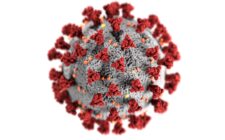What is diabetes mellitus:
Diabetes mellitus (diabetes) is a state in which an individual has elevated blood sugar, either because the human body does not make sufficient insulin, or because cells do not act in response to the insulin that is formed. This causes the usual symptoms of polyuria (identified by frequent urination), polydipsia (identified by increased thirst) and polyphagia (identified by severe hunger).
Category of Diabetes:
- Type 1 Diabetes
- Type 2 Diabetes
- Gestational Diabetes
The body’s malfunction to generate insulin causes Type 1 diabetes, and currently requires the individual to infuse insulin. Insulin resistance, a state in which cells fail to use insulin correctly causes Type 2 diabetes, now and then shared with an complete insulin deficiency. When pregnant women, never had diabetes previously but contain a high blood glucose stage for the period of pregnancy causes Gestational diabetes.
Insulin became available since 1921 and all forms of diabetes have been treatable after the introduction. Both type 1 and 2 are chronic circumstances that typically cannot be cured. Pancreas transplants have been tried with partial triumph in type 1 Diabetes, gastric bypass surgical treatment has been successful in many type 2 Diabetes. Gestational diabetes typically resolves after delivery. One should undergo proper treatment for diabetes to reduce the complications that may be arises due to Non treatment.
complications:
The following are the general complications caused,
- Cardiovascular disease
- Chronic renal failure
- Retinal damage
- Diabetic ketoacidosis
- Hypoglycemia
Origin
The origin of the diabetes depends upon the Type of the diabetes, which is mainly due to the Genetics and lifestyle factor.
Type 1 diabetes is also partially hereditary and then triggered by certain infections, with some indication pointing at Coxsackie B4 virus. There is a genetic element in individual vulnerability to some of these triggers which has been traced to meticulous HLA genotypes. In Some cases, still in those who have inherited the vulnerability, type 1 diabetes mellitus seems to involve an ecological trigger.
Analysis
Diabetes mellitus is distinguished by persistent or continual hyperglycemia, and is diagnosed by demonstrating any one of the following,
- Glycated hemoglobin (Hb A1C) = 6.5%.
- Indication of hyperglycemia and laid-back plasma glucose = 11.1 mmol/L (200 mg/dL).
- Fasting plasma glucose level = 7.0 mmol/L (126 mg/dL).
- Glycated hemoglobin (Hb A1C) = 6.5%.
- Plasma glucose = 11.1 mmol/L (200 mg/dL) two hours after a 75 g oral glucose load as in a glucose tolerance test.
An affirmative outcome, in the lack of unambiguous hyperglycemia, should be long-established by a replicate of any of the above-listed process on a dissimilar day. It is prudent to evaluate a fasting glucose stage because of the ease of measurement and the significant time assurance of formal glucose tolerance testing, which takes two hours to complete and recommend no prognostic benefit over the fasting test. Two fasting glucose capacity above 126 mg/dL (7.0 mmol/L) is measured analytical for diabetes mellitus.
Diabetes States
Impaired fasting glucose– Fasting glucose level from 100 to 125 mg/dL (5.6 to 6.9 mmol/L)
Impaired glucose tolerance– plasma glucose at or above 140 mg/dL (7.8 mmol/L) but > 200 mg/dL (11.1 mmol/L), two hours after a 75 g oral glucose load.
When these two pre-diabetic states are compared, then the final in scrupulous is a major jeopardy aspect for development to full-blown diabetes mellitus as well as cardiovascular disease.
Administration
Diabetes mellitus is a chronic disease which is hard to heal. We need to manage on keeping blood sugar stage as close to usual (euglycemia) as potential. Close dietary management, exercise, and use of correct pills manage us to keep the sugar level in-tact.
Patient education, understanding, and participation is extremely vital since the impediment of diabetes are far less general and less brutal in people who have well-managed blood sugar levels. Wider physical condition problems may hasten the harmful possessions of diabetes. Smoking, prominent cholesterol stage, obesity, high blood pressure, and be deficient in regular exercise is the causes of Diabetes.
Daily life adaptation
Lifestyle adjustment are suggested to organize blood pressure in patients with hypertension, cholesterol in those with dyslipidmia, as well as to keep fit more, smoking a smaller amount or preferably not at all, consuming a suggested diet. Sensible exercise, dietetic support, patient education is exercised regularly in order to maintain the blood glucose levels within acceptable bounds over the period of time. Both short-term and long-term goals are planned well in advance.





